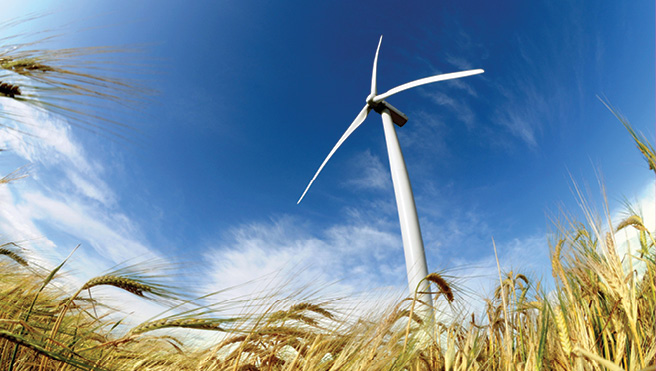High performance computing: Empowering the energy sector


The Irish Centre for High-End Computing (ICHEC) is Ireland’s national High Performance and Technical Computing centre, which provides advanced high performance computing solutions and infrastructure to academia, industry and the public sector since 2005.
ICHEC is powered by people and the vision to assemble functional teams of domain experts, technologists, software engineers and project managers. Together, we leverage the centre’s knowledge in a multi-disciplinary approach to technical computing, data management and software engineering. This results in thriving programmes of public sector and industrial engagement, with particular expertise and success in the energy sector.


Renewable energy
The renewable energy sector is an arena in which ICHEC’s unique blend of expertise is paying dividends.
ICHEC has worked in collaboration with a number of leading national energy companies on improving the accuracy of wind and solar weather forecasts. The forecasting system was implemented in production mode on the ICHEC systems and is currently producing highly detailed short-term forecasts of wind and solar fields for use in renewable energy applications. ICHEC provides regular training with an overall objective for the client to develop the skills required to independently manage and run the forecasts on the ICHEC systems.
In addition, ICHEC will be making available, long-term, high-resolution gridded datasets of solar radiation and wind energy (onshore and offshore) fields for Ireland through a project funded by the Sustainable Energy Authority of Ireland (SEAI) and the Environmental Protection Agency (EPA). It is expected that applications of the datasets will include the development of a solar atlas for Ireland and an update of the SEAI wind atlas. Furthermore, the datasets will be shared with industry and third level institutes and hence, promote wind and solar energy research and development in Ireland.
This SEAI funded work has seen ICHEC nominated as a finalist for Best Contribution to Data Science from an Academic Research Body in the Data Science Awards 2017.
Such renewable energy forecasting and modelling studies require both domain expertise and supercomputing resources. ICHEC has the knowledge and infrastructure in place to meet this demand and looks forward to continued collaboration in the renewable energy and forecasting domains. Furthermore, High Performance Computing (HPC) and ICHEC are playing their part in supporting the Irish government’s climate change commitments such as the COP21 targets and the EU Directive on the Promotion of the Use of Renewable Energy (2009/28/EC, NREAP) whereby Ireland is committed to ensuring that 16% of the total energy consumed in heating, electricity and transport is generated from renewable resources by 2020.
Reducing costs for Oil and Gas
ICHEC has been providing consultancy and R&D within the Oil and Gas sector for the last decade. Oil and Gas continues to push technological boundaries, relying on the latest geophysical methods as well as the latest advances in High Performance Computing (HPC). ICHEC works closely with companies of all scales that have an interest in Oil and Gas, including exploration and production companies such as Tullow Oil plc., national oil companies and technology companies such as DDN Storage.
The decline in the oil price has forced the upstream Oil and Gas sector to adapt and has lead to an increased demand for HPC services. This can be attributed to the growing computational and data challenges associated with the sector, combined with the cost reductions that are achievable in exploration and production through the application of HPC methods.
To date, ICHEC expertise in the sector has focused on:
- developing and optimising seismic applications for production use on HPC systems;
- developing high performance input/output (data) and workflow libraries to shorten development time of new seismic and seismic data management tools;
- creating high-performance and scalable seismic tools;
- performing system-level performance optimisations;
- exploring new hardware products for seismic workloads such as burst buffer and related technology; and
- exploring machine learning.

Novel technology in Oil and Gas
Traditional HPC activities have largely been confined to seismic processing and reservoir modelling, but there are also many other opportunities. ICHEC is currently exploring projects in seismic compute, I/O, cloud, machine learning and geospatial.
On the compute side, accelerators such as NVidia GPUs, Intel Phis and FPGAs are actively used within Oil and Gas as a key technology for addressing compute bottlenecks. ICHEC has world-recognised expertise in accelerator technology (Intel IPCC, Xilinx Alliance and CUDA Research Center membership) and will be expanding the use of accelerators within the seismic domain.
Machine learning for seismic processing, geological interpretation and classification of relevant features is currently a hot topic of consideration. ICHEC’s ability to optimise machine learning codes to deliver the greatest performance, particularly our experience with GPU usage, is a key capability that sets ICHEC apart from other service providers or institutions.
Due to the increasing size of seismic datasets, scalable and performant I/O is an increasingly important goal within the industry. Software advances in the use of parallel file systems, burst buffers and Non-Volatile Memory (NVM) are key to addressing this bottleneck. ICHEC continues to develop high performance I/O libraries and workflow solutions to target seismic processing and the increasing complexity of storage hierarchies.
ICHEC also performs research in partnership with DDN Storage on the exploitation of their Infinite Memory Engine, a high-performance data-cache and burst-buffer, with seismic workloads which leverage I/O libraries developed by ICHEC.
ICHEC is also investigating research and innovation opportunities within cloud storage and archival including exploring technology for transparent storage caching of the cloud. This work naturally leads on to technologies for deeper mirroring of near-line and active storage. Oil and Gas represents a key vertical for data storage requirements, requiring petabyte scales and above.
ICHEC clearly delivers value in this sector as demonstrated by the increased performance and productivity of our industry clients. We are very keen to develop new relationships with any interested companies whether they be Oil and Gas companies, technology companies, oil services companies or related geophysical companies in all areas that touch upon high-performance optimisation, scalability or novel technologies (software and hardware).
High performing Ireland
A unique blend of domain and high performance computing expertise places ICHEC at the forefront of computational and data science in Ireland. Through ICHEC’s work, it is obvious that HPC has a crucial role to play in the future of the energy sector and there is much exciting work on the horizon.
ICHEC is co-funded by the Departments of Jobs, Enterprise & Innovation and Education and Skills, as well as from industry engagement and competitive EC programmes. ICHEC is hosted by NUI Galway with offices in Dublin and Galway.
Should you wish to find out more, please contact Dr Cathal Ó Broin (Oil and Gas) or Dr Paul Nolan (Renewable Energy).
Contact details
Dr Paul Nolan
Dr Cathal Ó Broin
E: consultancy@ichec.ie
T: +353 1 524 1608





